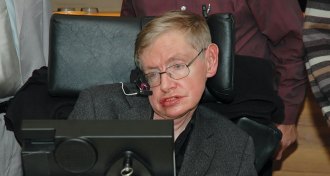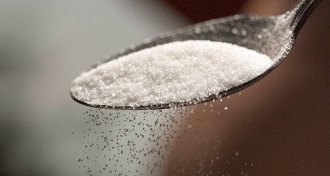Search Results
The languages of the fields
Students will define key science terms from a range of scientific fields using contextual clues from Science News articles.
Telling two scientists’ stories
Students will answer questions based on the Science News articles "Flowing toward a sustainable future" and "Mapping stars across generations."
Reflections past and present
These discussion prompts encourage students to reflect on their own academic progress, on the state of science and on the concept of reflection in physics.
Exploring Emmy Noether’s life
Students will answer questions based on the Science News article "Emmy Noether's vision."

Stephen Hawking’s Legacy Will Live On
This guide reviews the life and work of Stephen Hawking and asks students to work individually or in small groups to derive equations and calculate a theoretical amount of Hawking radiation emitted by a black hole.
Escaping from a black hole
Students will come to better understand black holes and Hawking radiation by deriving expressions and calculating theoretical data that relate to these phenomena.
Mind over body
These discussion prompts focus on some of Stephen Hawking's most notable discoveries and ideas, as well as the disease that destroyed his nerve cells.
A life revisited
Students will explore and compare articles about Stephen Hawking and black holes from the Science News archive.
Remembering Stephen Hawking
Students will answer questions based on the Science News article "Stephen Hawking's legacy will live on."

Small Intestine is First Stop for Fructose
This guide explores a variety of sugars and how they are modified in the body -- as well as how scientists follow those modifications.
Track those sugars
These discussion prompts ask students about how isotopes can be used to label and track chemical molecules, and about sugars and the enzymes they interact with.

Smartphones Overshare
This guide explores an increasingly ubiquitous technology: the smartphone. How do its sensors work, what data do they collect and how can we keep ourselves safe from its spying eyes?